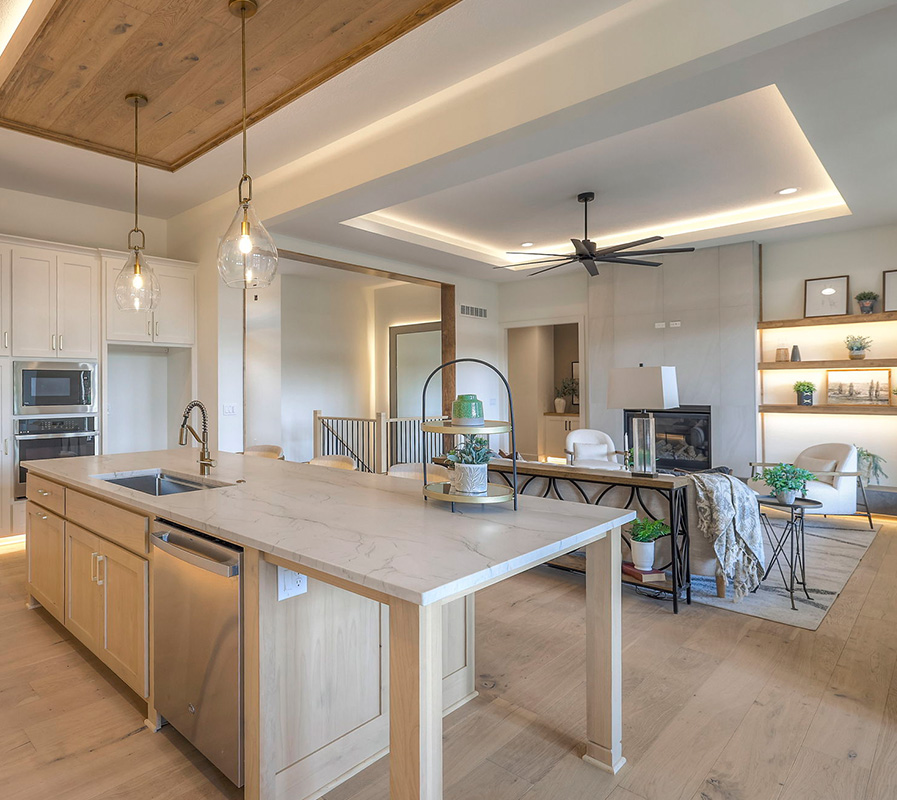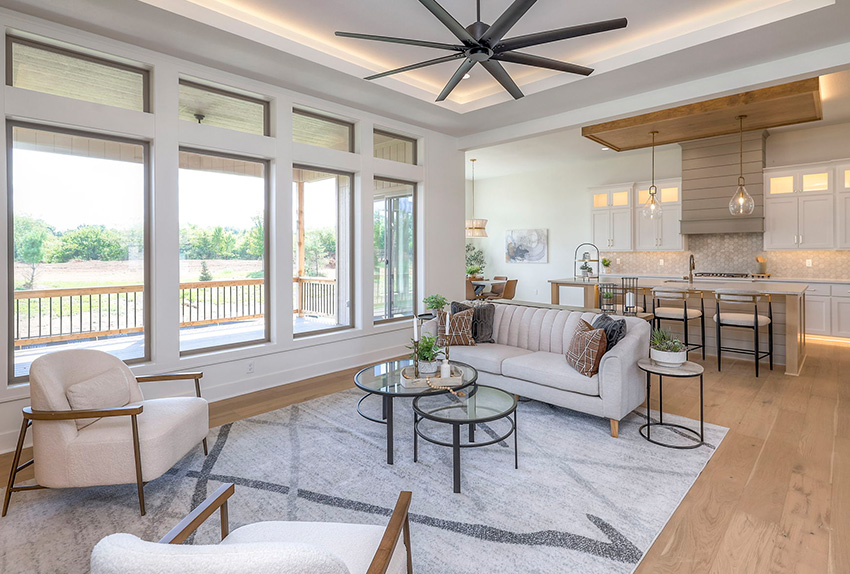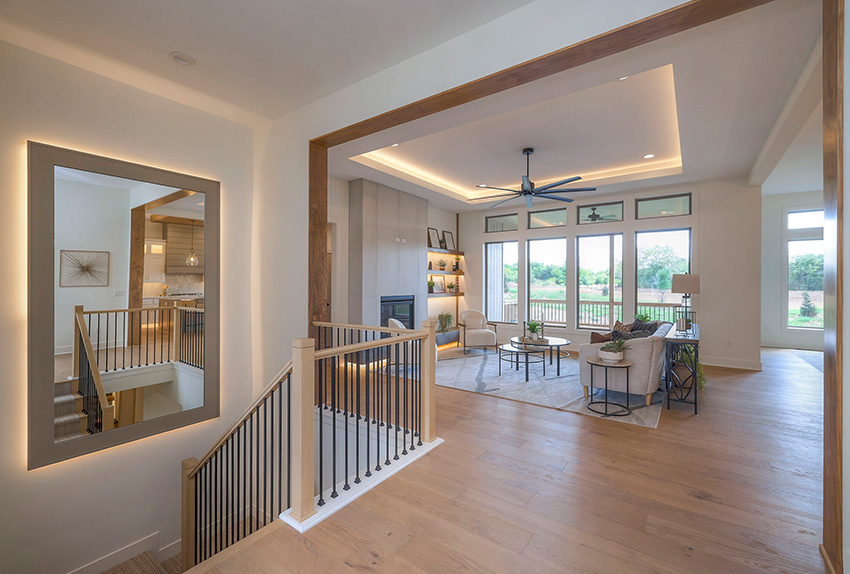
The Importance of Acoustics in Home Design: Creating a Quiet Haven
When homeowners think of home design, they often picture layout, style, and finishes, but one of the most overlooked elements is acoustics. The way sound travels through a home affects comfort, privacy, and even health.
A thoughtfully designed home should not only look beautiful but also sound serene. By integrating acoustic design into planning and construction, homeowners can create a true quiet haven where family life, work, and relaxation thrive.
What Are Home Acoustics and Why Do They Matter?
Home acoustics refer to how sound behaves within a space: how it moves, reflects, or is absorbed by different materials and layouts. In a residential setting, acoustics influence everything from the noise level in a living room to the privacy of a bedroom.
Poor acoustics can create echoey rooms, carry noise between floors, or let outdoor sounds intrude. Good acoustics, on the other hand, help maintain a peaceful environment where conversations are clear, distractions are reduced, and families feel more comfortable.
At Woodland Trails, where quiet cul-de-sacs, expansive green spaces, and tree-lined streets are part of everyday life, acoustics are naturally enhanced by thoughtful community design. This blend of nature and architecture shows how sound can shape the feeling of home — making it not just a place to live, but a place to rest, recharge, and connect.
The Benefits of Good Acoustics in Home Design
Acoustic design isn’t just about blocking noise. It’s about creating a healthier, more enjoyable living environment. A home designed with sound in mind offers multiple advantages that go beyond comfort.
Enhanced Comfort and Privacy
Well-planned acoustics reduce sound transfer between rooms and floors. This means you can watch a movie in the living room without disturbing kids studying upstairs, or enjoy a private conversation without it echoing through the house. Privacy and comfort go hand in hand when sound is properly managed.
Health and Well-Being
Noise pollution is more than just an annoyance. It can raise stress levels, disrupt sleep, and affect overall wellness. Homes with better acoustics create a sense of calm, allowing residents to rest, recharge, and live healthier day to day.
Productivity and Focus
In today’s world, many families need quiet spaces for remote work, online classes, or focused study. Acoustic design helps minimize distractions, making it easier to stay productive at home. Whether it’s a home office or a child’s study nook, good sound control improves concentration and learning.
Quick Benefits at a Glance:
- Less noise between rooms
- Better sleep quality
- Reduced stress levels
- Improved focus for work or study
- A greater sense of peace at home

Common Acoustic Challenges in Homes
Even the most beautifully designed homes can struggle with sound control. Modern layouts and materials often create unintended acoustic issues that affect daily comfort. Recognizing these challenges makes it easier to plan effective solutions.
Open Floor Plans
Large, open living areas are visually stunning, but they also allow sound to travel freely. Conversations, kitchen noise, or TV audio can echo throughout the space.
High Ceilings and Hard Surfaces
Luxury features like vaulted ceilings, stone fireplaces, and expansive windows add elegance, but they also reflect sound, creating echoes and amplifying noise.
Outdoor Noise
Even in quiet neighborhoods, sound can seep in from traffic, lawn equipment, or neighbors. Without proper design and materials, outdoor noise can disrupt the peace inside your home.
Acoustic Challenge
Open Floor Plans
High Ceilings & Hard Surfaces
Outdoor Noise
Impact on the Home
Echo and noise spreading across rooms
Increased echo and loudness
Disturbed sleep, reduced privacy
Example Solution
Rugs, partitions, acoustic panels
Drapes, upholstered furniture, area rugs
Double-paned windows, added insulation
How to Improve Acoustics in Your Home
The good news is that acoustic issues can be addressed at any stage. Whether you’re designing a new custom build or upgrading your current space. By combining smart architecture with thoughtful materials, you can create a quieter, more comfortable environment.
Smart Architectural Design
The layout of a home plays a huge role in sound control. Placing bedrooms away from high-traffic areas, designing with cul-de-sacs in mind, and including enclosed spaces for offices or media rooms helps reduce noise transfer.

Sound-Absorbing Materials
Hard surfaces bounce sound, while soft materials absorb it. Rugs, curtains, upholstered furniture, and even wall treatments can reduce echo and improve clarity in open spaces.
Windows and Insulation
Double-paned or laminated windows block outside noise, while high-quality insulation between walls and floors keeps sound from traveling between rooms.
Landscaping and Outdoor Buffers
Nature itself is one of the best sound barriers. Trees, shrubs, and fencing can help block noise from outside sources. At Woodland Trails, where hundreds of trees have been thoughtfully planted, natural landscaping not only enhances beauty but also contributes to a quieter living environment.
Improvement Type
Quick Fixes
Long-Term Solutions
Examples
Rugs, curtains, acoustic panels
Insulation, double-paned windows, landscaping
Best For
Reducing echo in open rooms
Whole-home noise reduction & lasting comfort
Acoustics in Luxury Home Design: A Woodland Trails Perspective
In luxury home design, every detail matters — and acoustics are no exception. At Woodland Trails, quiet living is built into the very fabric of the neighborhood. Spacious lots, tree-lined streets, and cul-de-sacs naturally reduce noise between homes, while the surrounding green spaces act as buffers against outside sound. This thoughtful community design supports the same sense of privacy and peace that families and empty nesters value most.
Our builders also understand that true luxury extends beyond appearances. From quality insulation and smart layouts to the integration of natural materials, every home is designed with comfort and livability in mind. The result is a timeless environment where conversations are clear, distractions are minimized, and daily life feels calm and restorative.
By blending timeless architecture, natural sound barriers, and professional craftsmanship, Woodland Trails creates more than homes. We create quiet havens that stand the test of time.
Key Takeaways for Homebuyers and Builders
Whether you’re buying, building, or upgrading, acoustics should be part of your home design checklist. A quiet environment improves health, privacy, and overall enjoyment of your home.
For Homebuyers:
- Ask how insulation and windows reduce outside noise.
- Check room placement for privacy and sound control.
- Walk through the home at different times of day to notice neighborhood noise.
For Builders & Designers:
- Incorporate sound-absorbing materials in open layouts.
- Position bedrooms and offices away from busy living spaces.
- Use landscaping strategically to buffer outside noise.
- Remember: acoustics add long-term value to the home.
Why It’s Worth the Investment:
- Enhances daily comfort and relaxation.
- Supports health and focus.
- Adds a subtle, but powerful layer of luxury.
Building a Quiet Haven That Lasts
Acoustics are one of the hidden pillars of great home design. They shape how a house feels and not just how it looks. By planning for quiet, families enjoy better rest, empty nesters find true privacy, and everyone benefits from a more peaceful living environment.
At Woodland Trails, this philosophy is built into every detail. From tree-lined buffers and spacious cul-de-sacs to homes crafted with professional care, our community is designed to sound as good as it looks. When acoustics are considered alongside architecture and nature, the result is more than a house — it’s a timeless quiet haven where life can truly flourish.

